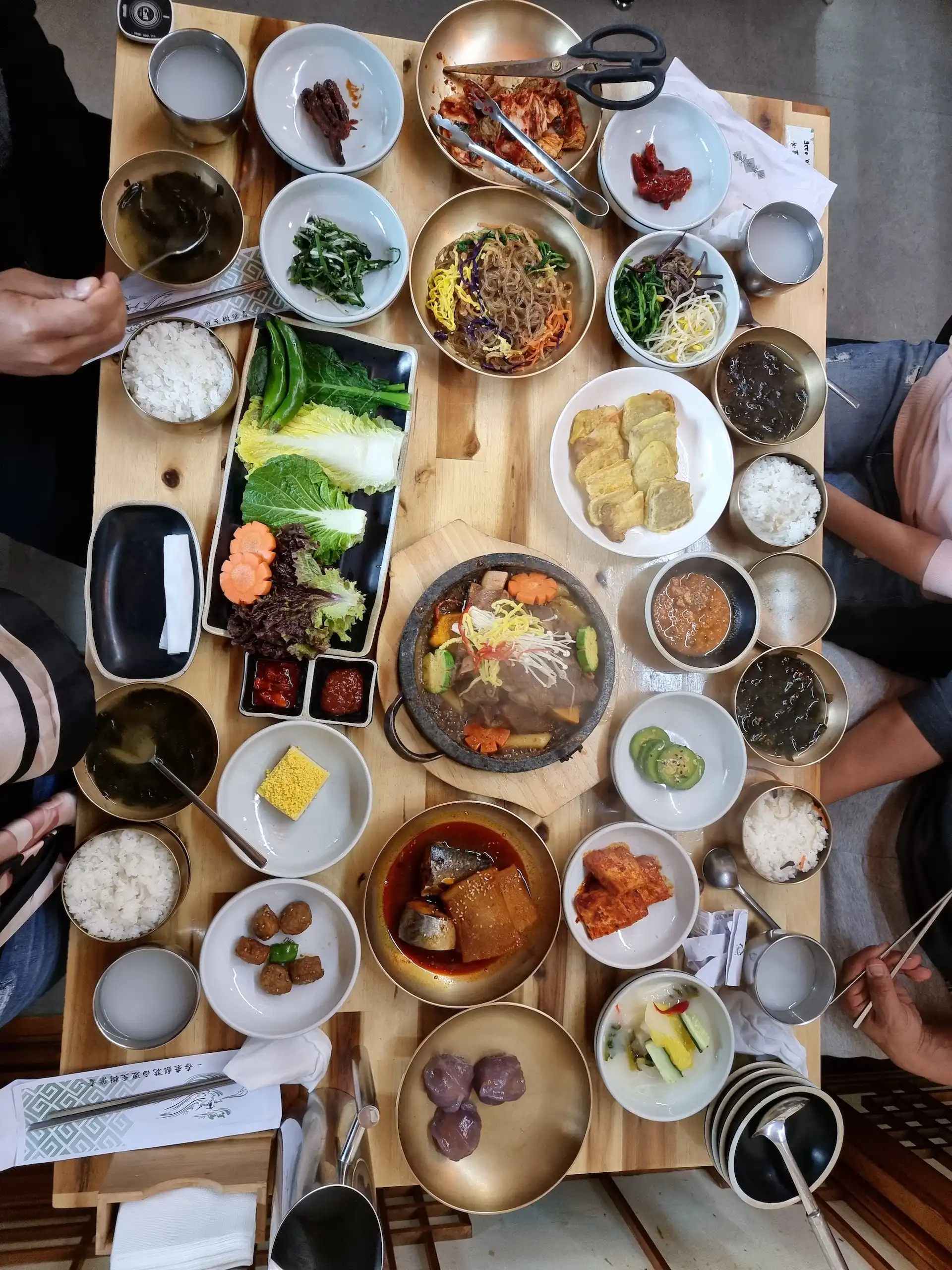|
Getting your Trinity Audio player ready...
|
Culture Shock in South Korea
Travel is not just about landscapes and tourist attractions; it’s about the experiences you live and the memories you create. One of the most impactful experiences is a culture shock—that moment when nothing around you is familiar, and you lose all your reference points. These shocks can be surprising, confusing, or even overwhelming. However, they shape who we are, making us more resilient and open-minded. Here are some personal stories and reflections on cultural shocks from my travels in South Korea, with a touch of humor.
Table of Contents
- Culture Shock in South Korea
- Food and Dining Etiquette
- Social Interactions
- Everyday Life
- Understanding Culture Shock
- Like it? Pin it!

This post contains sponsored and/or affiliate links, and I earn a commission at no extra cost to you. I appreciate your support and stand by my views.
Food and Dining Etiquette
Communal Dining:
My first meal in South Korea was a whirlwind. Kimchi accompanied every dish, and the communal style of eating was unlike anything I’d experienced. The culture shock of sharing food from common plates felt invasive at first, like I was on a culinary episode of Survivor. But soon, it became a wonderful way to bond with friends and family. Slurping noodles loudly, chewing, and speaking with open mouths were common practices. I tried to embrace it and just slurp the noodles, but I couldn’t. Every fiber in my body resisted, like trying to dance to a tune I couldn’t hear. Eventually, I embraced the chaos, and it became part of the fun. This experience taught me the value of communal dining and the joy of sharing meals.
Honesty in Conversations:
South Koreans are known for their brutal honesty. I will never forget the culture shock when my girlfriend held up her phone and said, “I was looking through your Facebook, you were so beautiful, what happened?” Ouch! Another time, I was denied a latte because a friend said it made me fat. Talk about tough love! These blunt comments were shocking at first, like getting roasted by your funniest friend constantly, but I came to appreciate the directness as a form of genuine concern and care, even if my ego took a few hits.
Handling Food:
In South Korea, people usually avoid picking up food with their hands. It’s amusing to see them eat hamburgers and pizza with a knife and fork or chopsticks. One time, I made Buffalo Chicken dip with crackers and celery. Watching my friends try to balance and eat the dip with chopsticks was hilarious. They carefully maneuvered the crackers and celery, all while trying to maintain a sense of decorum. It’s likely a matter of cleanliness and respect for communal dining. I wish I had filmed the whole scene. It was a perfect blend of cultural exchange and comedy.

Social Interactions
Bowing:
Bowing is a fundamental aspect of Korean etiquette. It’s a sign of respect used in greetings, farewells, and expressions of gratitude. The depth and duration of the bow vary depending on the situation and the social status of the person being greeted. The culture shock at first made me feel like I was in a perpetual game of Simon Says, but it soon became second nature. Now, I can bow like a pro—bobblehead on caffeine style!
Two-Handed Gestures:
In South Korea, it is considered impolite to accept or offer something, like cash, with one hand. Using both hands shows respect and gratitude. This practice was quite different from what I was used to, and the culture shock often left me juggling items awkwardly, like a clumsy circus performer. However, it highlighted the importance of respect and mindfulness in Korean culture.
Taking Off Shoes:
Removing shoes before entering a home is a must in South Korea. I quickly learned to always carry a pair of socks. I’ll never forget the cultural shock when I had friends over, and they were all sitting cross-legged at the table. All their socks were dirty because I had swept but hadn’t mopped. I was terrified they’d look down and notice their socks. If they did, no one said anything, and as soon as they left, I mopped the entire apartment—twice. Lesson learned: clean floors are non-negotiable!

Everyday Life
Honest Comments: The bluntness in everyday conversations can be surprising. On one occasion, a friend told me not to drink a latte because it would make me fat. Such comments, though shocking, are often intended to be helpful rather than hurtful. Understanding this intention helped me navigate social interactions more comfortably.
Hiking: Koreans are practically born with hiking boots on. Ajummas (older women) wear hats with the largest brims imaginable, and don’t count the old ones out—they’ll pass you up on the stairs and hurt your feelings without uttering a word or looking your way. Ajusshis (older men) climb with both hands behind their backs. I was told this was to alleviate back pain, but my friend, who always hikes with his arms behind his back, said he didn’t have back pain. Go figure. Watching these seasoned hikers conquer steep trails made me feel like I was still learning to walk!
Direct Communication: The directness extends beyond personal comments. I once introduced my American friend to a housekeeper. The Korean lady, very timid, looked around my friend’s house and commented on how dirty it was. She didn’t mean it as an insult; her limited vocabulary didn’t include “messy.” It was a priceless moment watching my friend’s eyes widen in shock. This straightforward approach, though jarring, often led to clear and efficient communication, allowing for rapid improvements and a deeper understanding of expectations.
A Special Request: One day, my girlfriend called and said she had something she wanted to ask me. I was a little afraid, not knowing what this woman intended to say. But when we met at a local coffee shop, she asked me to be her best friend. I wasn’t falling for it. Before answering, I asked her what exactly that meant in South Korea. Lol, do you know what it means? Tell me down below in the comments. If you get it right, you and I will also be best friends.

Understanding Culture Shock
- Honeymoon Phase: Initial excitement and fascination with the new culture. You’re like a kid in a candy store, everything is amazing! “Look at this! They bow! And the food! Wow!”
- Negotiation Phase: Frustration and anxiety arise as differences become apparent. Reality hits you like a ton of kimchi. “Why is everyone so blunt? And why can’t I get a simple coffee without a comment on my weight?”
- Adjustment Phase: Gradual understanding and adaptation to the new culture. You start to get the hang of things. “Okay, bowing isn’t so bad. And hey, maybe I needed to cut down on the lattes.”
- Mastery Phase: Full adaptation, where the individual can function comfortably in the new culture. You’re practically a local. “I bow, I slurp, and I can handle the truth bombs. Bring it on!”
While initially disorienting, cultural shocks often lead to greater cultural appreciation and personal growth. They push us out of our comfort zones and broaden our world understanding. Travel shapes who we are, making us more resilient and open-minded. We tend to judge others through our perspective, only to discover that what we call normal might be utterly weird for others. And that’s the beauty of it.
Like it? Pin it!
Thank you for reading this post, don't forget to subscribe!
Discover more from Duffel Bag Spouse Travels
Subscribe to get the latest posts sent to your email.


